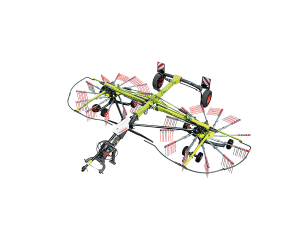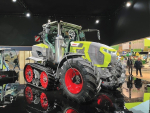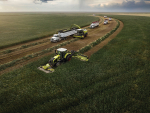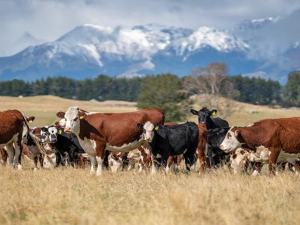Claas' latest generation of seven, dual-rotor central LINER swathers are said to offer numerous innovative features and functions to ensure premium forage quality.
The Grass Care rotor guidance system ensures that the rotors are actively suspended during operation and when lowered, the rear rotor wheels touch down first, producing a ‘jet-effect’ that prevents the tines from digging in and damaging the grass sward.
The 2900 and 2800 BUSINESS models also incorporate Active Float rotor suspension and load-sensing hydraulics, functioning in a similar way to the suspension of the same name in the Disco Contour disc mowers. By adjusting the suspension pressure, the ground pressure of the rotor can be adapted precisely to the forage quantity and ground conditions, allowing faster operating speeds and a reduction soil contamination.
LINER 2600 and 2700 models use a simple pin-and-hole system to adjust the working width, whereas working and swath widths can be adjusted hydraulically on the larger models. Raking height is adjusted by a crank handle on the rotors.
The tine arms are firmly attached by a 20-spline shaft and secured with a PROFIX bracket, while an integrated pre-defined bending point provides optimum protection for the rotor housing in the event of a collision. Each tine arm is fitted with four 9.5mm thick dual tines, each pair offset by 10 degrees to create a 10mm long trailing end to help lift the crop from the ground.
The twin rotors are mechanically driven via the PTO, increasing their raking force by up to 50% compared with hydraulic drives, with the shaft speed in the two Y-gearboxes reduced from 540 to 350rpm to protect the drivetrain.
The freewheel mechanism of the drive shaft is positioned directly inside the Y-gearbox, enabling the rotors to rotate freely in transport position.
Each rotor is fitted with a four-wheel chassis for optimal ground-contour following, with wheels positioned close to the arc of rotation of the tines to ensure smooth rotor guidance and optimum ground-contour following, while the front two chassis wheels are steerable. The new models are steered by a wide, robust transport axle with zeroplay mechanical forced steering, with mechanical adjustment for steering response.
With the exception of LINER 3100, all models have a transport width of less than 3m and a transport height of 4m with tine arms attached.











